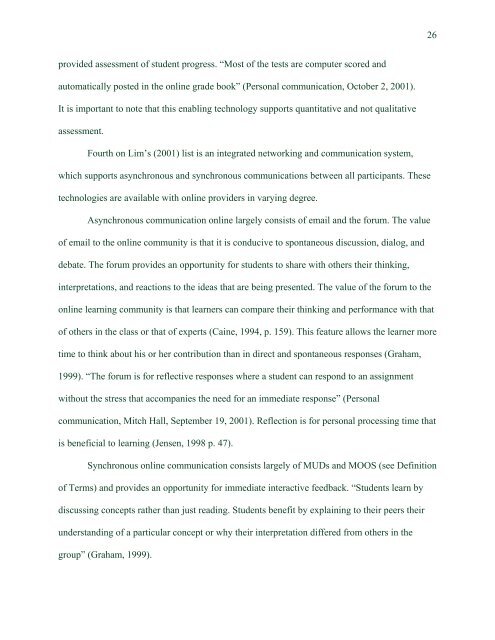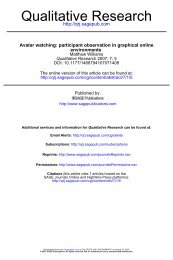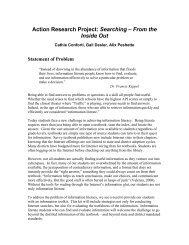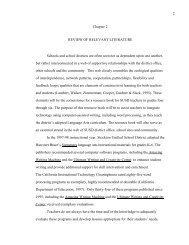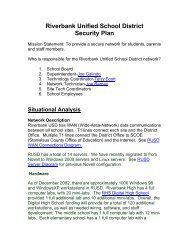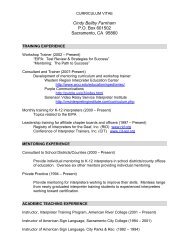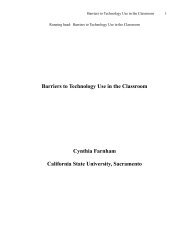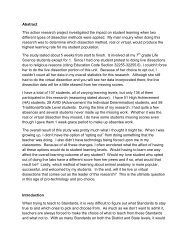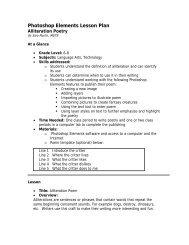Action Research Project: - iMET
Action Research Project: - iMET
Action Research Project: - iMET
You also want an ePaper? Increase the reach of your titles
YUMPU automatically turns print PDFs into web optimized ePapers that Google loves.
26provided assessment of student progress. “Most of the tests are computer scored andautomatically posted in the online grade book” (Personal communication, October 2, 2001).It is important to note that this enabling technology supports quantitative and not qualitativeassessment.Fourth on Lim’s (2001) list is an integrated networking and communication system,which supports asynchronous and synchronous communications between all participants. Thesetechnologies are available with online providers in varying degree.Asynchronous communication online largely consists of email and the forum. The valueof email to the online community is that it is conducive to spontaneous discussion, dialog, anddebate. The forum provides an opportunity for students to share with others their thinking,interpretations, and reactions to the ideas that are being presented. The value of the forum to theonline learning community is that learners can compare their thinking and performance with thatof others in the class or that of experts (Caine, 1994, p. 159). This feature allows the learner moretime to think about his or her contribution than in direct and spontaneous responses (Graham,1999). “The forum is for reflective responses where a student can respond to an assignmentwithout the stress that accompanies the need for an immediate response” (Personalcommunication, Mitch Hall, September 19, 2001). Reflection is for personal processing time thatis beneficial to learning (Jensen, 1998 p. 47).Synchronous online communication consists largely of MUDs and MOOS (see Definitionof Terms) and provides an opportunity for immediate interactive feedback. “Students learn bydiscussing concepts rather than just reading. Students benefit by explaining to their peers theirunderstanding of a particular concept or why their interpretation differed from others in thegroup” (Graham, 1999).


